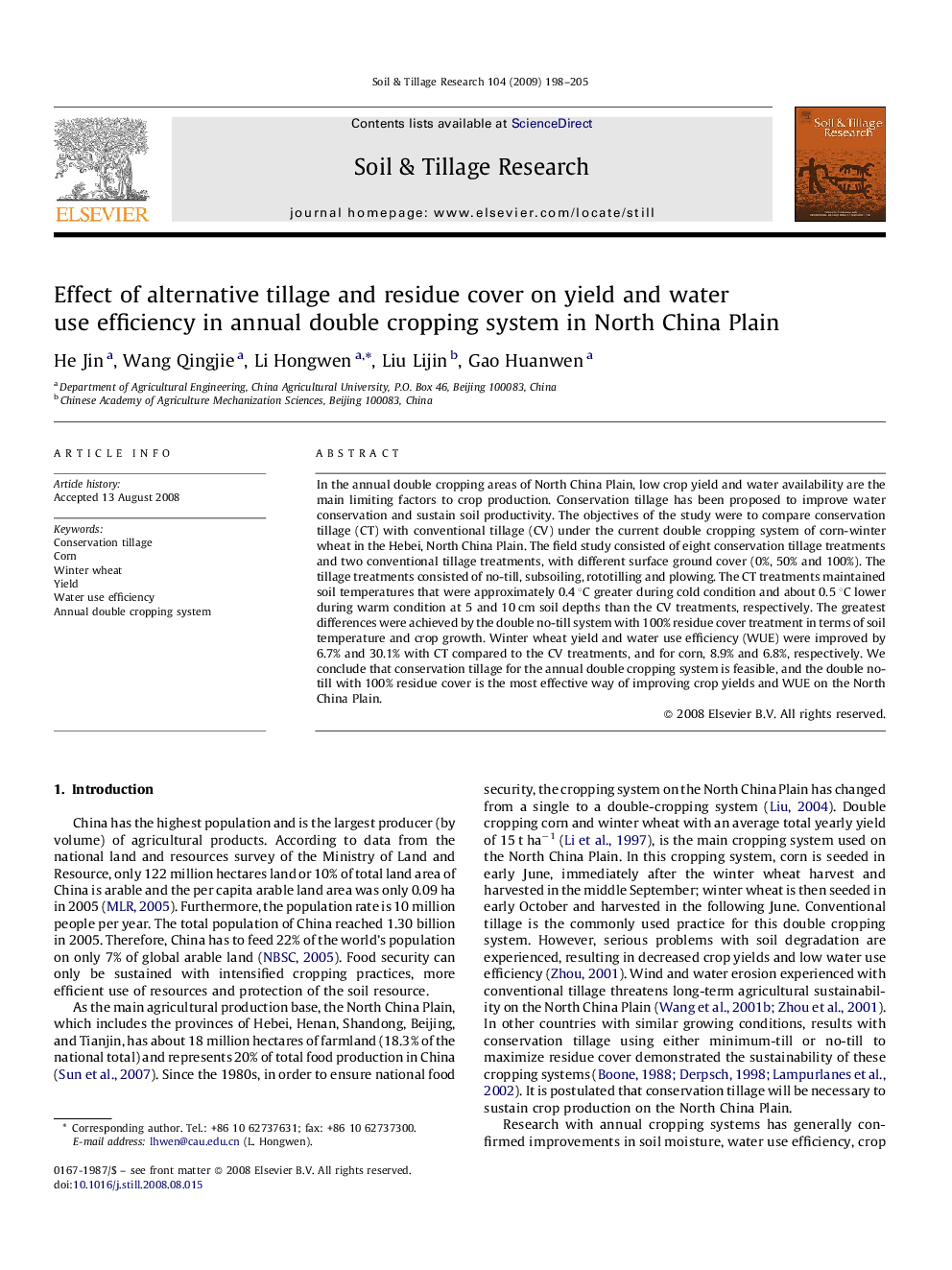| Article ID | Journal | Published Year | Pages | File Type |
|---|---|---|---|---|
| 306411 | Soil and Tillage Research | 2009 | 8 Pages |
In the annual double cropping areas of North China Plain, low crop yield and water availability are the main limiting factors to crop production. Conservation tillage has been proposed to improve water conservation and sustain soil productivity. The objectives of the study were to compare conservation tillage (CT) with conventional tillage (CV) under the current double cropping system of corn-winter wheat in the Hebei, North China Plain. The field study consisted of eight conservation tillage treatments and two conventional tillage treatments, with different surface ground cover (0%, 50% and 100%). The tillage treatments consisted of no-till, subsoiling, rototilling and plowing. The CT treatments maintained soil temperatures that were approximately 0.4 °C greater during cold condition and about 0.5 °C lower during warm condition at 5 and 10 cm soil depths than the CV treatments, respectively. The greatest differences were achieved by the double no-till system with 100% residue cover treatment in terms of soil temperature and crop growth. Winter wheat yield and water use efficiency (WUE) were improved by 6.7% and 30.1% with CT compared to the CV treatments, and for corn, 8.9% and 6.8%, respectively. We conclude that conservation tillage for the annual double cropping system is feasible, and the double no-till with 100% residue cover is the most effective way of improving crop yields and WUE on the North China Plain.
